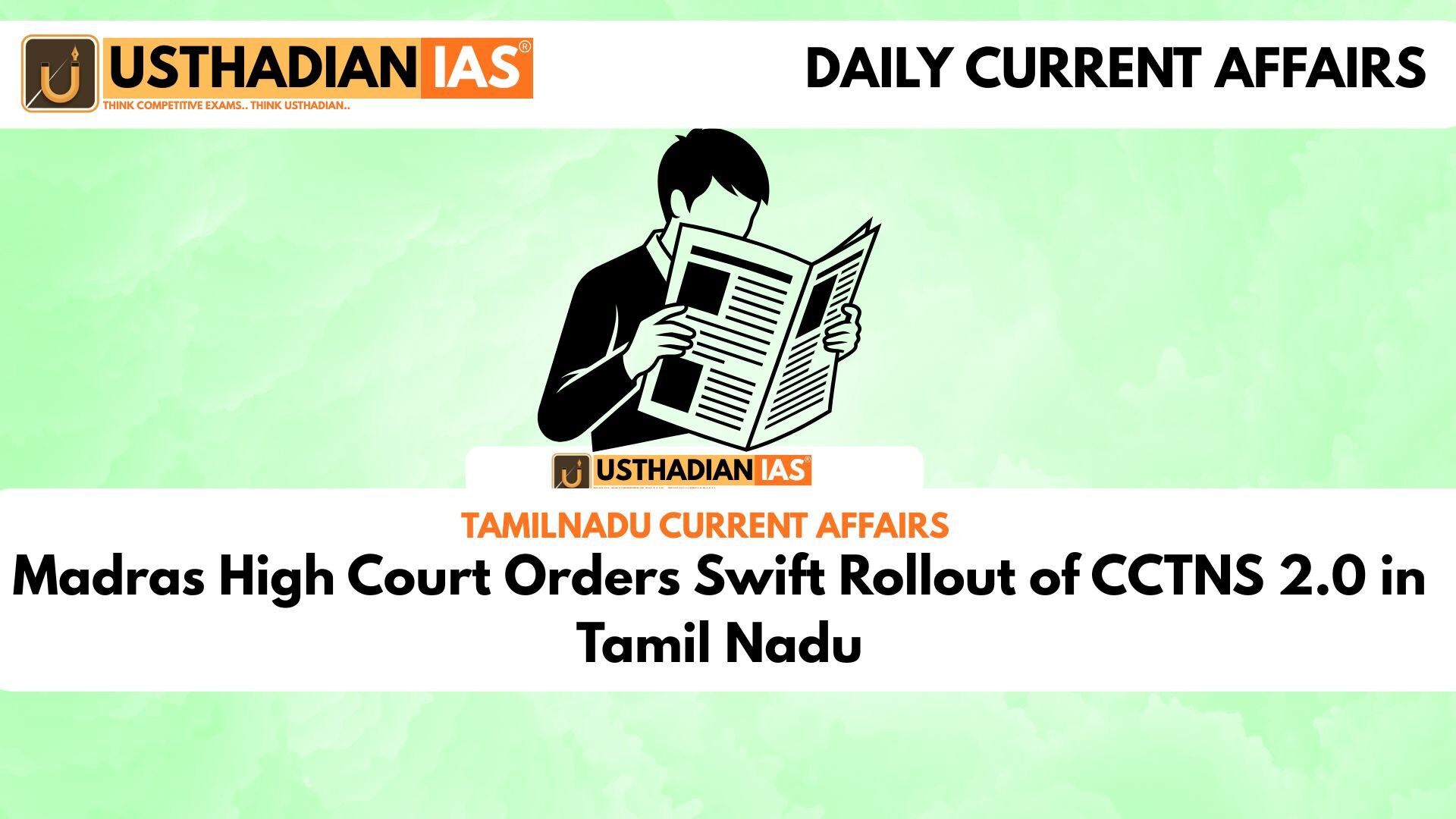High Court Pushes for Police Digitization
Madras High Court Orders Swift Rollout of CCTNS 2.0 in Tamil Nadu: In a significant move toward transforming law enforcement in Tamil Nadu, the Madras High Court has instructed the State Police Department to implement the Crime and Criminal Tracking Network & Systems (CCTNS) 2.0 within a four-month timeline. This direction underscores the judiciary’s commitment to strengthening digital policing infrastructure and enhancing inter-agency coordination for a faster, transparent justice system. The court highlighted the urgent need to adopt digital tools to streamline case tracking and data accessibility.
Understanding CCTNS and Its Impact
The Crime and Criminal Tracking Network & Systems (CCTNS) is an initiative launched by the Ministry of Home Affairs to connect and digitize all police stations nationwide. Unlike the current manual system, where information moves slowly through paperwork and postal services, CCTNS enables real-time sharing of police data using a centralized digital network. Through internet connectivity, police stations, district units, and the National Crime Records Bureau (NCRB) can share case files, FIRs, and citizen service records instantly, reducing delays and boosting efficiency.
The Role of CCTNS 2.0 and ICJS Integration
To enhance the digital justice ecosystem, the Supreme Court’s e-Committee has launched the Inter-operable Criminal Justice System (ICJS). This initiative integrates multiple platforms:
- CCTNS (Police)
- CIS (Courts)
- e-Prisons
- e-Forensics
- e-Prosecution
Together, these portals allow seamless digital flow of documents such as FIRs, charge sheets, and case diaries between the police, judiciary, and correctional departments. Courts at all levels can access these documents in PDF format, improving judicial transparency and efficiency in criminal proceedings.
NCRB and NIC: Backbone of Implementation
The National Crime Records Bureau (NCRB), operating under the Ministry of Home Affairs, has been tasked with executing the ICJS initiative alongside the National Informatics Centre (NIC). Their joint responsibility is to ensure that all data platforms are securely integrated through robust digital systems, minimizing manual errors and expediting the justice process.
Static GK Snapshot for Exams
Madras High Court Orders Swift Rollout of CCTNS 2.0 in Tamil Nadu:
| Topic | Details |
| CCTNS Full Form | Crime and Criminal Tracking Network & Systems |
| Initiated By | Ministry of Home Affairs |
| Directed By | Madras High Court |
| Implementation Timeline | Within 4 months (from May 2025) |
| Primary Objective | Digitize police records and enhance data sharing |
| ICJS Full Form | Inter-operable Criminal Justice System |
| Led By | Supreme Court’s e-Committee |
| Integrated Portals | CCTNS, CIS, e-Prison, e-Forensic, e-Prosecution |
| Implementing Agencies | NCRB and NIC |








